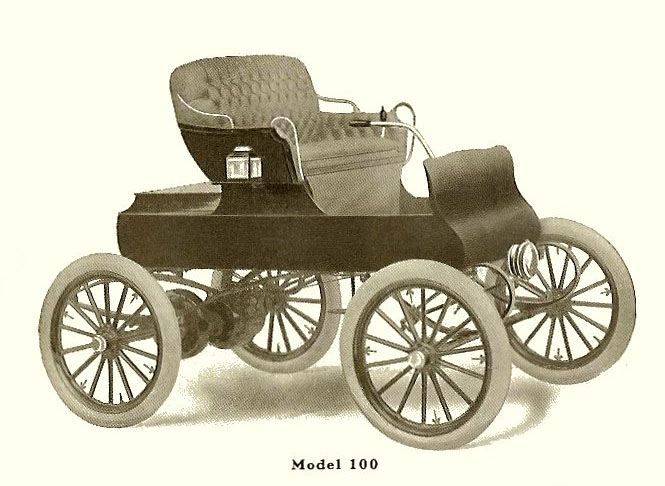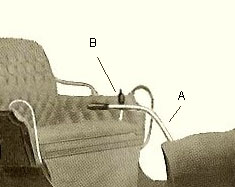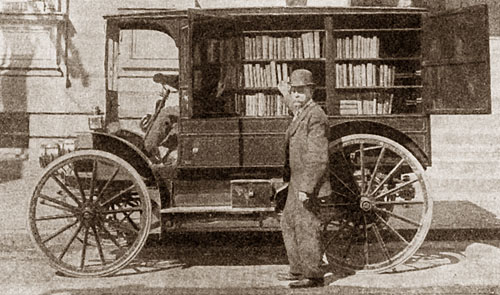
National Motor Vehicle Company of Indianapolis, Indiana.
Click picture to enlarge.
Today over at Shorpy they posted a photo from 1906 of the Tennessee Club in Memphis. There was some speculation about the little runabout in the picture, which reader Bruce Lancaster correctly identified it as a National Electric. There is a bit more to it than that however—when this particular model was first introduced, it was the hottest electric runabout of its day.
Pictured above is a 1904 Model 105 National Electrobile Special that cost $1,250 new. Without the leather top it would have been a $1,200 Model 100. The January 23, 1904 issue of Automobile Review called it "the most powerful electric two-passenger runabout on the market."
National's "new pattern 'C' springs" in front (conventional elliptics in the rear) make it instantly recognizable. It had a track of 54 inches and 32 x 3 and-a-half inch Continental tires were standard. The Piano Box style black body was six and-a-quarter feet long, and two and-a-half feet wide with the two-passenger carmine (deep red) leather seat hanging over four inches on each side. The running gear (axles, wheels, etc.) and the supports for the top (called boot risers) were also finished in carmine. If you wanted any other colors rather than the standard black/carmine combination, delivery would take two weeks longer. The hubs, controller lever, steering lever, and the like had a nickel finish.
The six-pole 3 hp (overload capacity 9 hp) electric motor mounted on the rear axle was an improved model made by National, and drove direct through herringbone (spiral) gears that ran in oil, inside a dust-proof case. The motor drew its power from a 36 cell Western brand battery that came with a rheostat to charge from any 110 to 125-volt circuit. The car was also equipped with an odometer and a combination volt/ammeter. An Edison or Exide brand battery could be had on some other models, but the Edison brand cost between $300 and $500 extra, depending on the size and style of the battery.
It had a compression band style brake along with an electric auxiliary hub brake—both claimed to be "very powerful" in the National Electric literature. First gear would top out at 5 mph, while fourth gear was good for 17 mph. Reverse gear was activated by a button in the end of the controller lever. The controller lever itself (B) is pointed out in the detail below. There was another push-button in the handle of the steering lever that operated an electric gong—their version of a horn.

B) Controller lever with push-button at the top for Reverse.
More later.

No comments:
Post a Comment